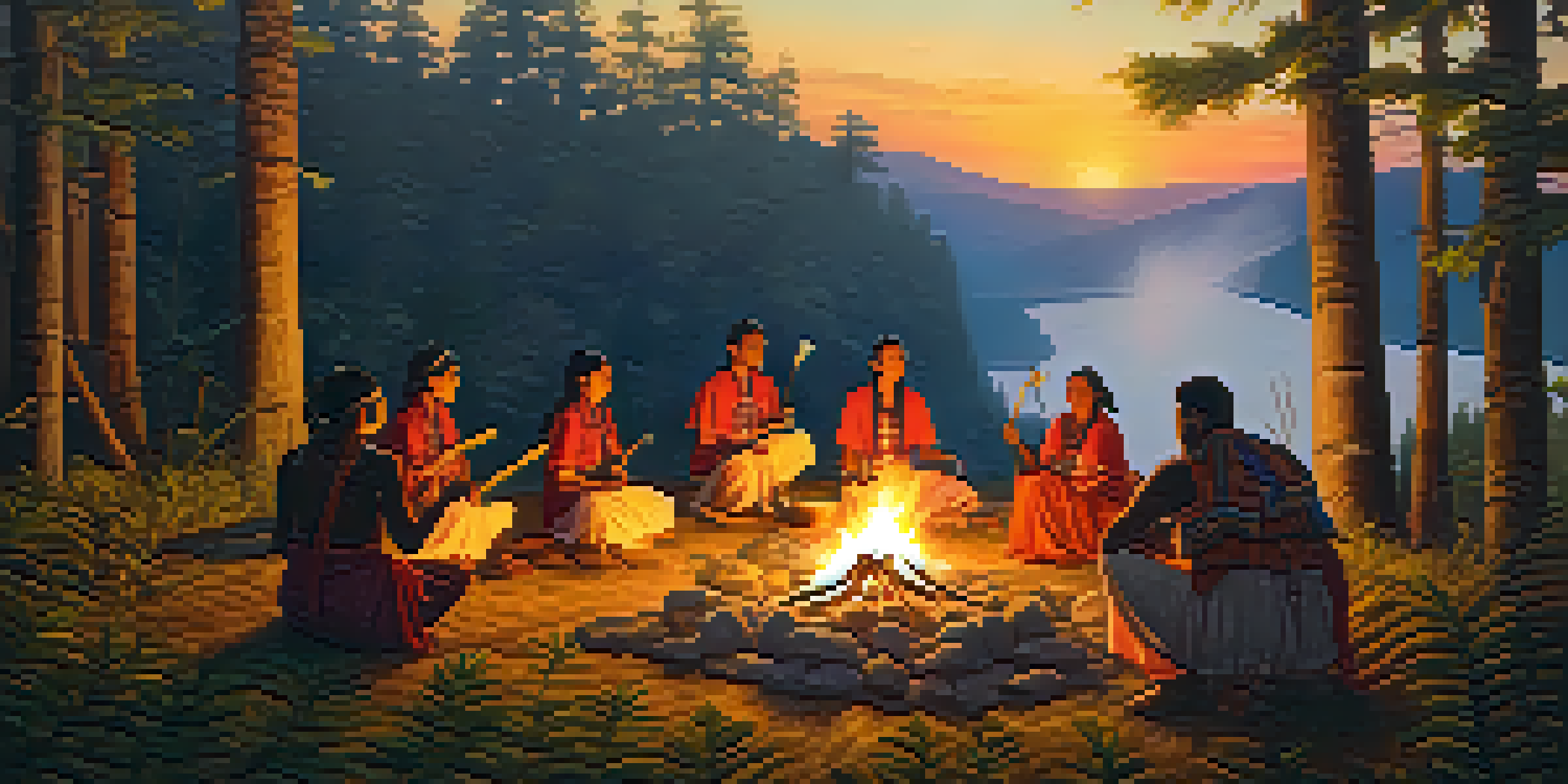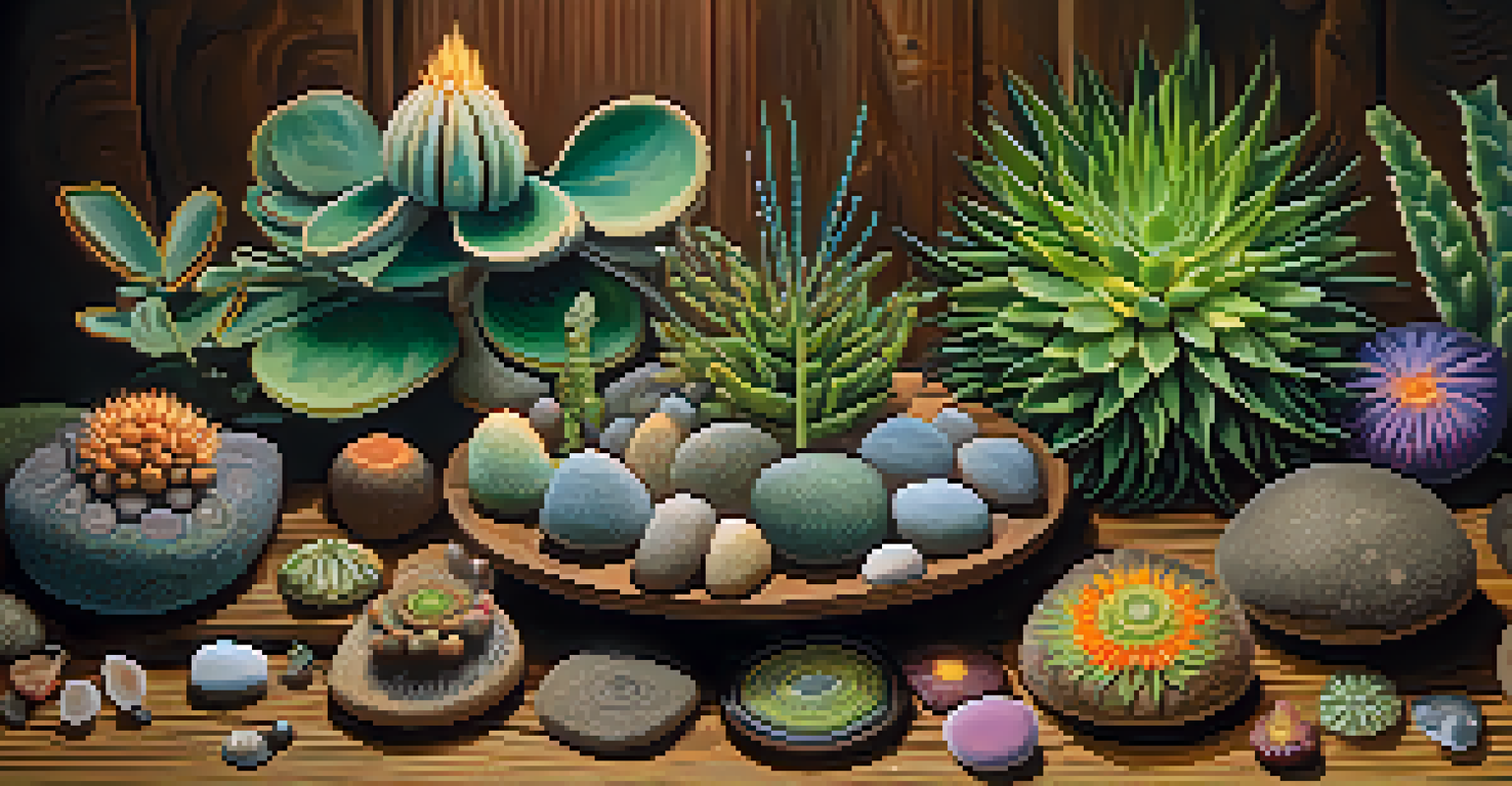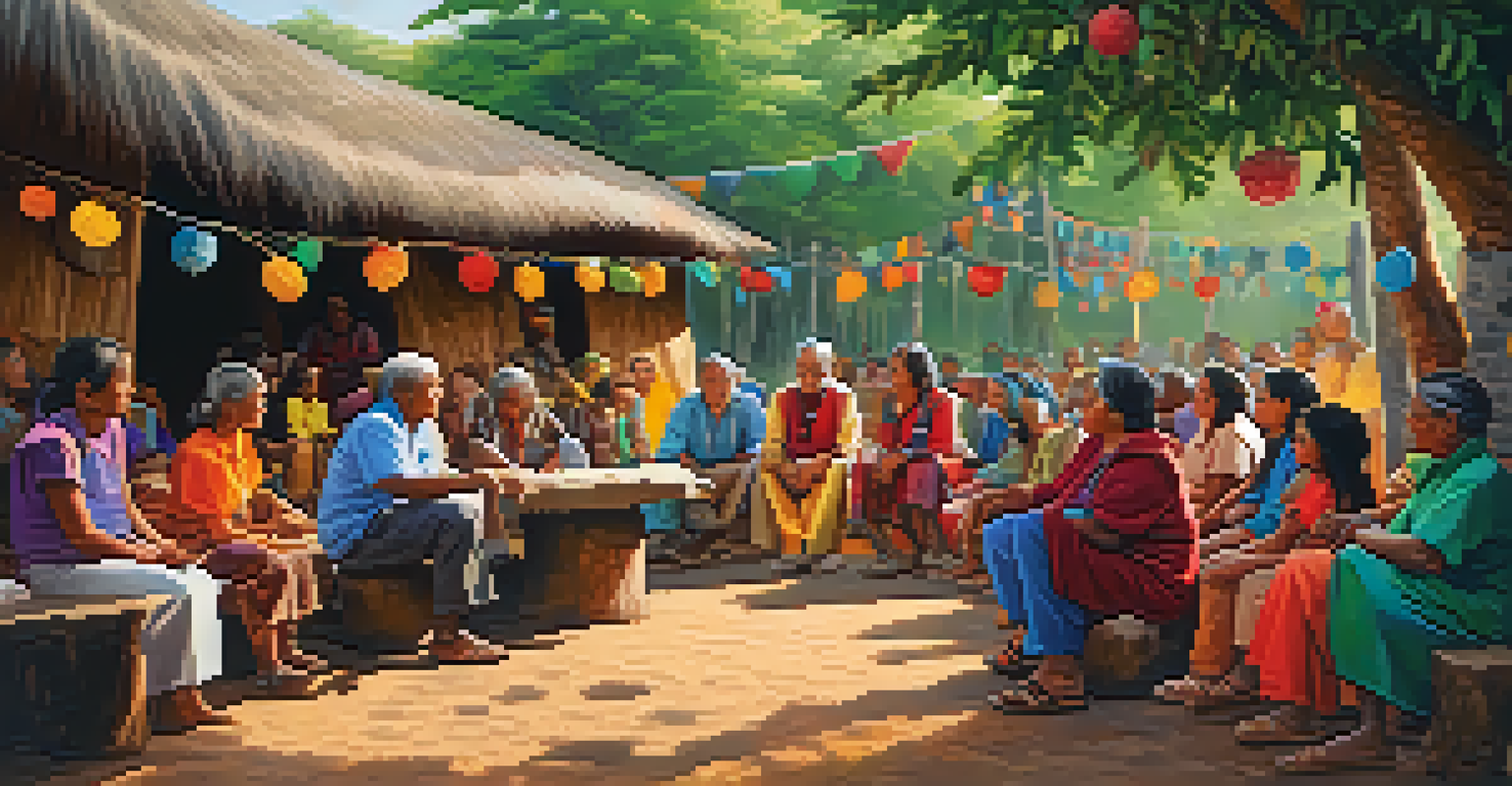Indigenous Practices: Hallucinogens and Healing Traditions

Understanding Indigenous Healing Traditions and Their Roots
Indigenous healing traditions are deeply rooted in cultural practices that span generations. These practices often integrate spiritual beliefs with natural remedies, emphasizing a holistic approach to health. The connection between body, mind, and spirit plays a crucial role in these healing methods, making them unique compared to Western medical practices.
The greatest medicine of all is teaching people how not to need it.
Many Indigenous cultures believe that illness can stem from spiritual imbalances or disconnection from nature. Therefore, healing often involves rituals, community support, and the use of natural resources, including plants with psychoactive properties. This approach not only seeks to treat physical ailments but also aims to restore harmony within individuals and their communities.
By understanding these traditions, we can appreciate the wisdom embedded in Indigenous practices. They highlight the importance of viewing health through a multifaceted lens, where emotional and spiritual well-being is just as significant as physical health.
The Role of Hallucinogens in Indigenous Healing Practices
Hallucinogens have long played a pivotal role in various Indigenous healing traditions. These substances, often derived from plants, are believed to facilitate deep spiritual experiences and promote healing on multiple levels. For instance, peyote and ayahuasca are commonly used in ceremonies to connect participants with their ancestors and the spirit world.

During these rituals, participants may undergo profound experiences that can lead to emotional release or insights about their lives. This process is often guided by a skilled shaman or healer, who interprets the visions and ensures the safety and well-being of the participants. The communal aspect of these ceremonies fosters a sense of belonging and support, essential for effective healing.
Indigenous Healing is Holistic
Indigenous healing traditions emphasize a holistic approach that integrates spiritual beliefs, natural remedies, and community support.
While many people view these substances with skepticism, Indigenous cultures recognize their potential to heal psychological trauma and foster personal growth. This perspective invites us to reconsider the stigma surrounding hallucinogens and explore their benefits when used in a traditional context.
Cultural Significance of Hallucinogenic Plants
Hallucinogenic plants hold deep cultural significance in many Indigenous societies. They are not merely viewed as substances but rather as sacred gifts from the earth that provide wisdom and healing. For example, the use of ayahuasca in the Amazon serves not only as a means of healing but also as a bridge to understanding the interconnectedness of all life.
We do not inherit the earth from our ancestors; we borrow it from our children.
These plants are often accompanied by rituals and teachings that reinforce their importance. Elders and shamans pass down knowledge about their use, the correct dosages, and the appropriate settings for consumption. This oral tradition ensures that the wisdom regarding these sacred plants is preserved and respected across generations.
Furthermore, the cultural significance of these hallucinogens extends beyond individual healing; they play a vital role in community identity and cohesion. By participating in these shared experiences, community members strengthen their bonds, reinforcing their cultural heritage and collective resilience.
The Journey of Indigenous Knowledge and Practices
The journey of Indigenous knowledge surrounding hallucinogens is both rich and complex. Historically, these practices have faced challenges, including colonization and cultural appropriation, which have threatened their survival. Despite this, many Indigenous communities continue to uphold and revitalize their traditions, ensuring that the knowledge of hallucinogenic plants is not lost.
Modern interest in these practices has led to a renaissance of sorts, where both Indigenous and non-Indigenous individuals seek to learn from traditional wisdom. This growing awareness has sparked conversations about the ethical considerations of utilizing these practices and substances. It's essential to approach this knowledge with respect and a commitment to understanding its cultural context.
Hallucinogens Aid in Healing
Hallucinogenic plants are used in Indigenous practices to facilitate spiritual experiences and promote healing on emotional and psychological levels.
As we witness this resurgence, it becomes increasingly clear that Indigenous practices are not relics of the past but living traditions that adapt and evolve. The ongoing journey of these practices showcases resilience and the power of cultural revival in the face of adversity.
Modern Science and Indigenous Wisdom: A Complementary Approach
In recent years, modern science has begun to recognize the potential benefits of hallucinogens, aligning with Indigenous wisdom in surprising ways. Research studies have demonstrated the efficacy of substances like psilocybin and MDMA in treating mental health conditions such as PTSD and depression. This scientific validation brings new attention to Indigenous practices that have utilized these substances for healing.
The intersection of modern medicine and Indigenous knowledge encourages a dialogue that respects both perspectives. While Western science often seeks to isolate and study single compounds, Indigenous traditions emphasize the importance of context, ceremony, and spirituality in the healing process. This complementary approach can lead to more comprehensive treatment options for those in need.
As we move forward, it’s vital to foster collaboration between Indigenous healers and scientists. By combining traditional practices with modern research techniques, we can deepen our understanding of hallucinogens and their potential role in holistic healing.
Challenges and Ethical Considerations in Using Hallucinogens
While the interest in hallucinogens is growing, it’s essential to address the challenges and ethical considerations surrounding their use. Cultural appropriation is a significant concern; as non-Indigenous individuals seek to participate in these practices, it’s crucial to respect the cultural significance and integrity of these traditions. Engaging with Indigenous communities and acknowledging their wisdom is vital to fostering respectful relationships.
Moreover, the commodification of hallucinogens can lead to their misuse outside of traditional contexts. This is particularly concerning when individuals seek these experiences without the necessary guidance or understanding of their cultural roots. It’s important to educate those interested in these practices about the importance of proper context, preparation, and integration following experiences.
Cultural Respect is Essential
Engaging with hallucinogens requires a deep respect for Indigenous cultures and their traditions to avoid appropriation and ensure ethical practice.
Addressing these challenges requires open dialogue and collaboration with Indigenous communities. By prioritizing ethical considerations, we can ensure that the resurgence of interest in hallucinogens contributes positively to both mental health and the preservation of Indigenous cultures.
The Future of Indigenous Practices and Hallucinogens
The future of Indigenous practices involving hallucinogens is ripe with possibilities. As more individuals and communities recognize the value of these traditional healing methods, there is an opportunity for deeper understanding and collaboration. This growing interest could lead to increased respect for Indigenous knowledge and practices, as well as support for revitalization efforts.
With ongoing research and dialogue, we may see a gradual shift towards integrating Indigenous healing practices into mainstream mental health care. This integration would not only validate the effectiveness of these practices but also promote cultural healing and resilience within Indigenous communities. The potential for mutual learning and respect is immense.

Ultimately, the future hinges on our collective commitment to honoring Indigenous traditions and promoting ethical engagement. By fostering curiosity and respect, we can pave the way for a more inclusive understanding of healing that benefits all.